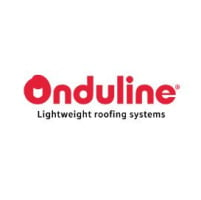-
Philippines
Copyright © 2025 Powered by BCI Media Group Pty Ltd
Confirm Submission
Are you sure want to adding all Products to your Library?
Contact Detail

The weather has become unpredictable because of the effects of Climate Change. Some days, it’s extremely hot. On other days, it’s a stormy afternoon. The sudden changes can be detrimental to your household and create damages that are oftentimes unseen. This creates problems in the future when you are unable to prevent the effects caused by the weather.
The roof is one of the important parts of the home that takes the first hit from weather effects. The roof is an essential part of your home. It’s what protects the interior from bad weather and climate change. To keep your home safe and secure for you and your loved ones, you must ensure that your roof is well-kept and ready for climate change.
To help you determine if your roof is climate change-ready, read below to see what you need to check and the steps you need to take.
Climate change causes an increase in temperature that isn’t usually recorded as a common occurrence. The increased temperature can cause the materials in your roof to expand and contract. This leads to buckling or cracking of the tiles or shingles. When tiles or shingles start to crack or brittle, they continuously weaken until you prioritize repairs or replacement.
Meanwhile, during rainy seasons or an increase in stormy weather, the excess water can also lead to build-ups on your roofs. The build-up can cause moisture damage, mold growth, as well as other problems that can occur in the long run. It’s important to remember that your roof is the first line of defense against the weather, so you should be aware of the effects the weather can cause.
Now that you understand the effects that climate change can cause on your roof, your next step is to inspect it for damages. To prepare your roof for extreme weather changes, you must check its current condition before making any hasty decisions. When it comes to your home, you need to be meticulous about your routine check-ups to avoid any problems or miss any opportunities to repair them.
Check if your roof has any signs of tear, such as cracks or worn-out shingles. The smallest damage should be taken seriously, as those can only cause more predicaments over time due to climate change. Check for any dampness or molds that signify moisture getting into the home through your roof. Carefully look at any possible holes or rusting in your roof, as those may indicate a need to replace them.
Reputable roofings would use materials that can withstand heat and rain for years. So whenever you are building or renovating your home, make sure you only choose roofings that use proper and quality materials.
Maintaining your roof should be part of your schedule. This helps in securing your home despite the effects of climate change. During the checks, you can have a professional inspect your roof for existing damages if you cannot determine those yourself. A professional may be able to give you better details or advice you if your roof may need replacing. You can also check for potential areas where future damages may occur after heavy rainfall or heightened temperatures. Inspections can be done every five years unless there is a severe change in climate in your area.
You can choose to repair any damages yourself before considering a replacement in the material. This will give you ample time to decide on the best product suited for your household. If you see only minor cracks in the shingles or tiles, temporary repairs can do just fine. However, if you see any major damages that are causing leaks or cracks, then it may be time to replace it with a roof that’s of quality.
Finally, when you've decided to replace your roof, choose a lightweight system capable of withstanding high/important weather changes . Bitumen is one of the Onduline components that gives value to its waterproofing capability. Moreover,it can hold against the monsoon seasons or winds up to 260km/h on wooden purlin and 225kph on steel purlin. Additionally, the roofs proved to be suitable in severe humidity, it has thermal conductivity = 0.098W./ m.C.
Investing in a good roofing system could save you money in the long run while providing much-needed protection against global warming effects.
Climate change will continue to impact the world. That’s why Onduline has created ways to help with its effects and do its part in reducing its carbon footprint. For your peace of mind, get your roofs checked and opt to replace them with Onduline roofings
Send your inquiries through this webform. Our sales executive will contact you after receiving your information



